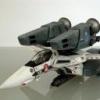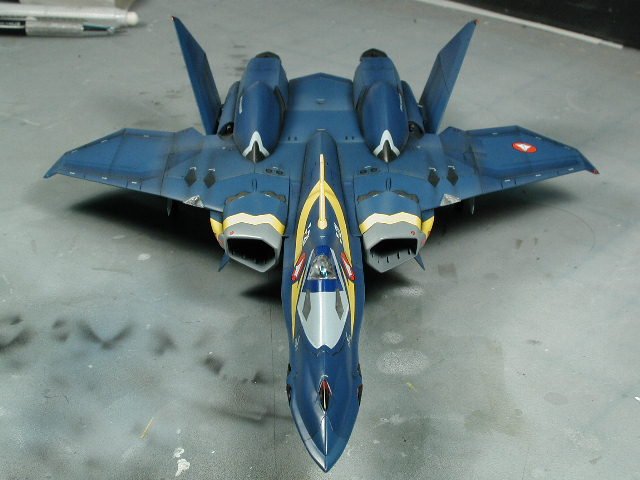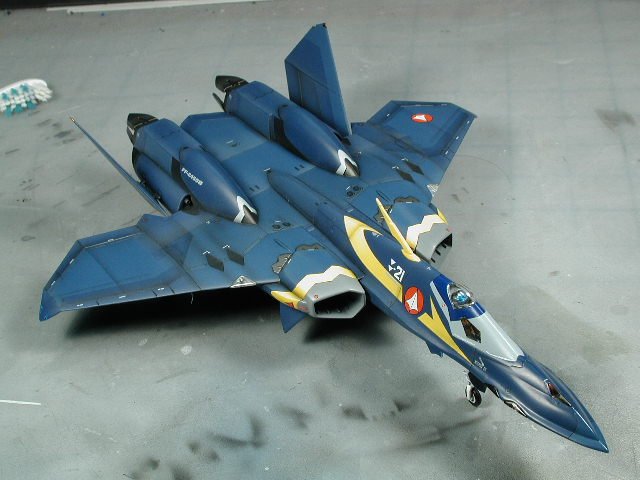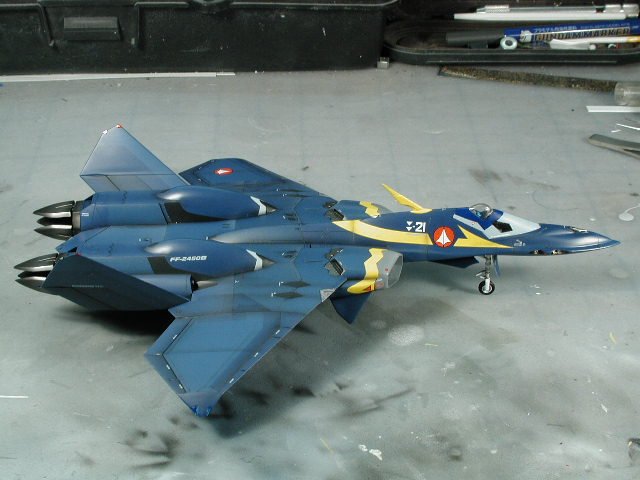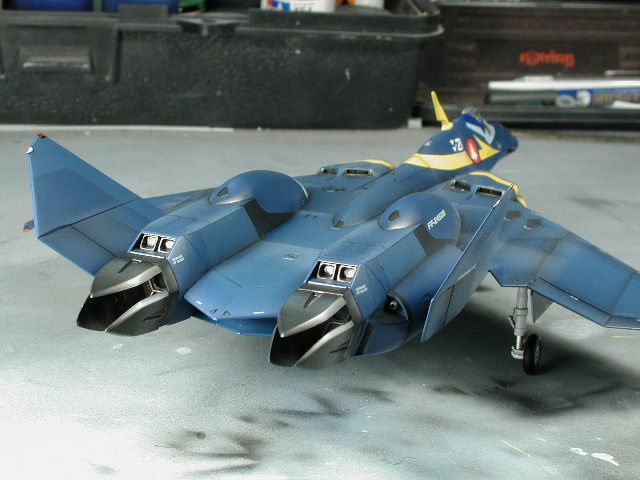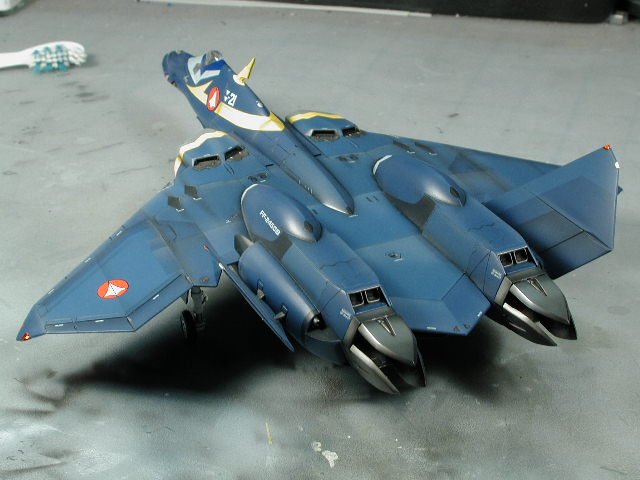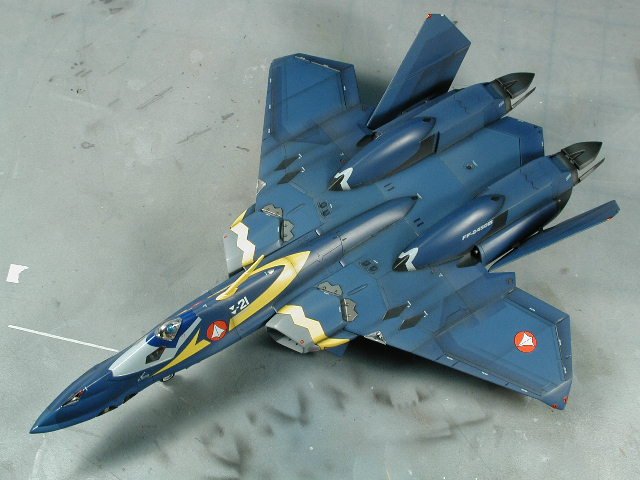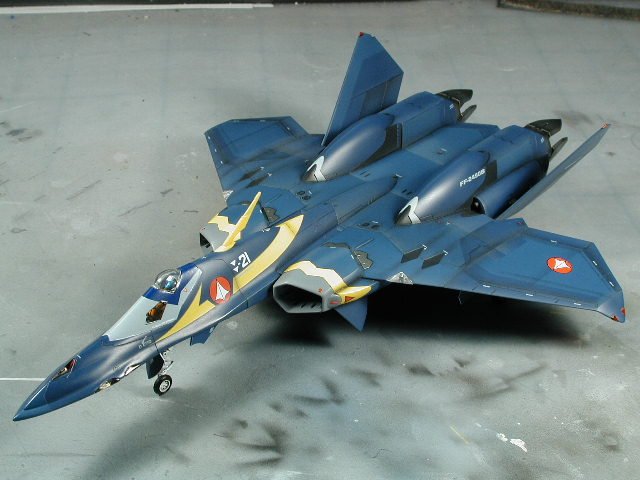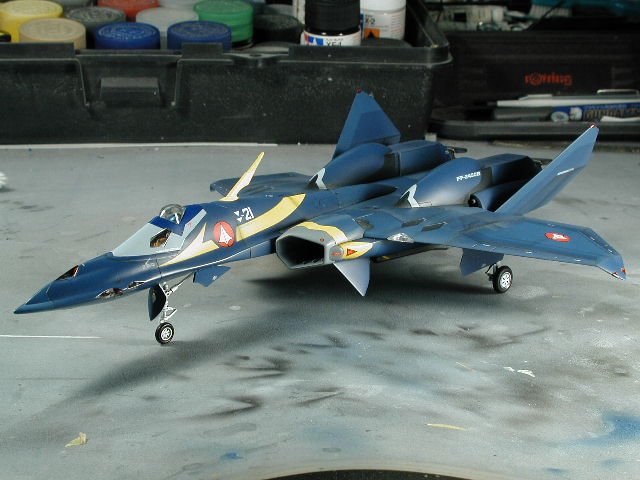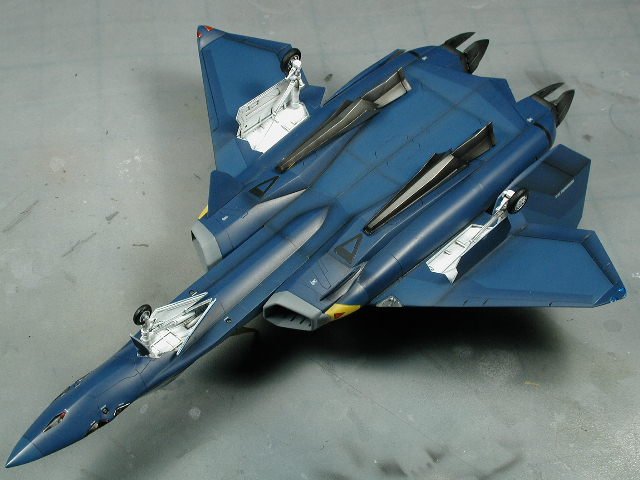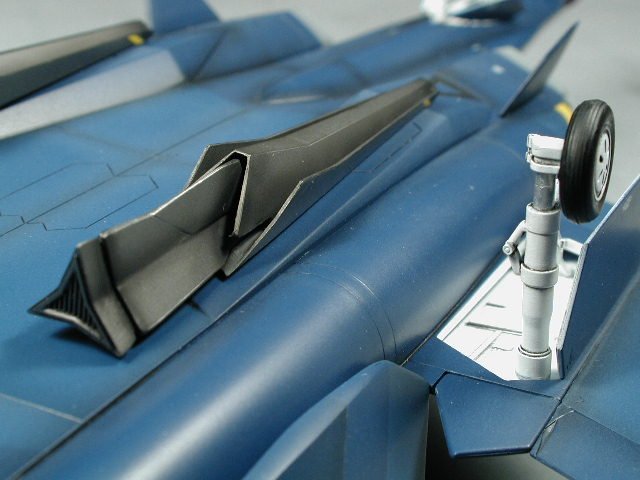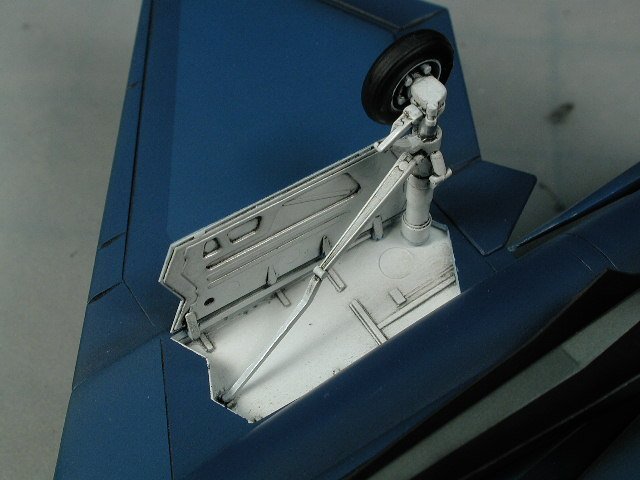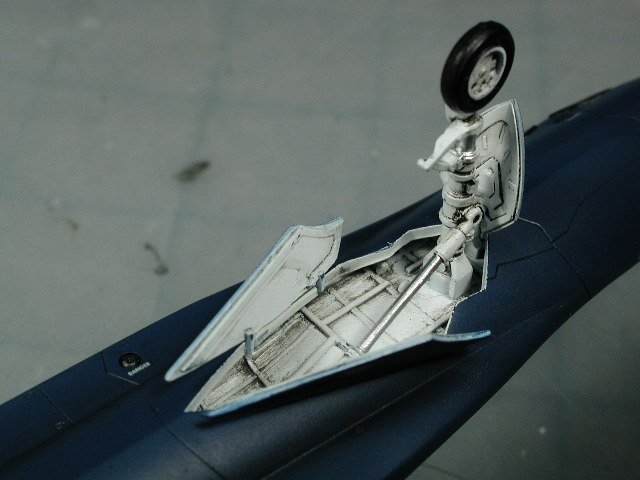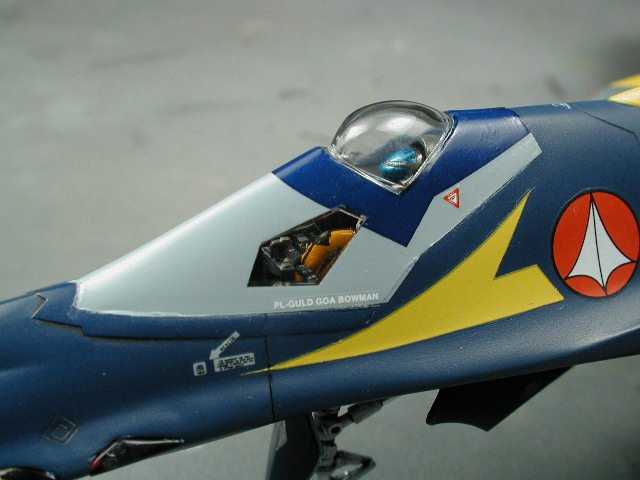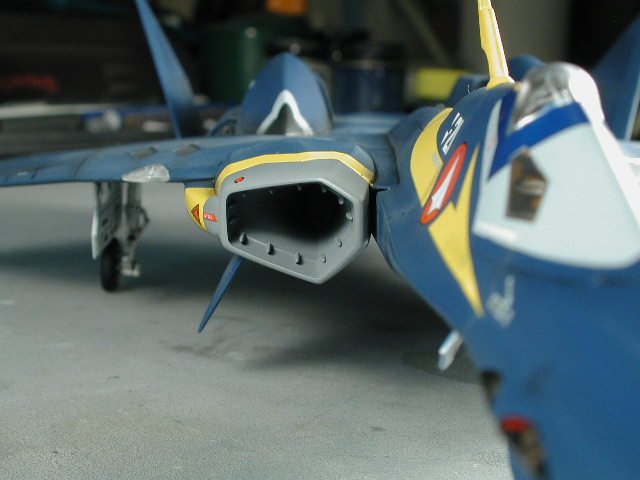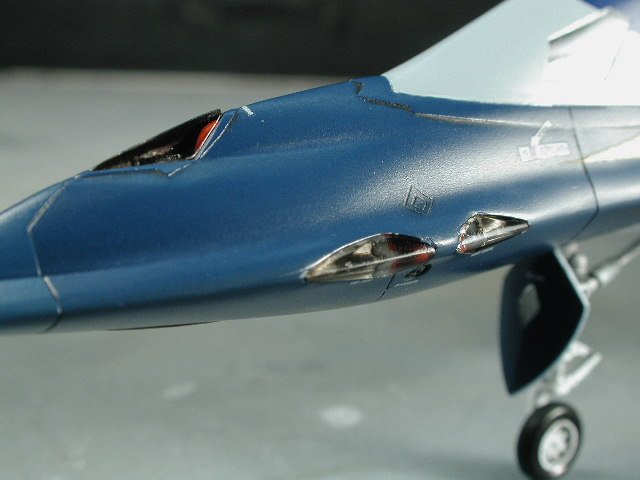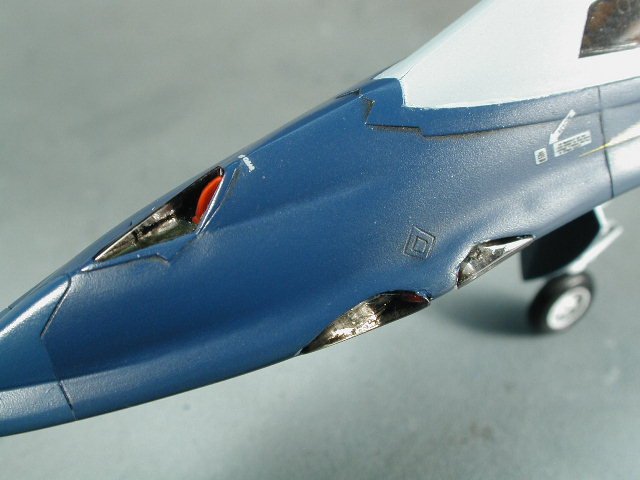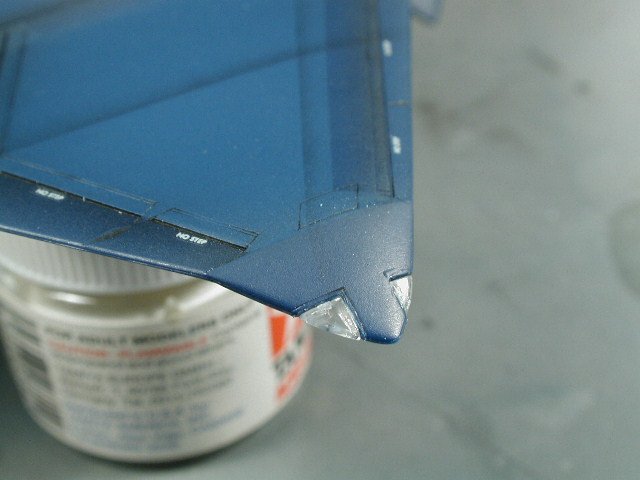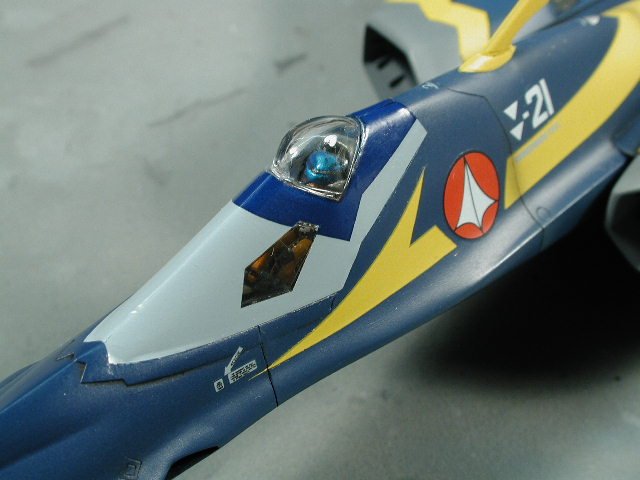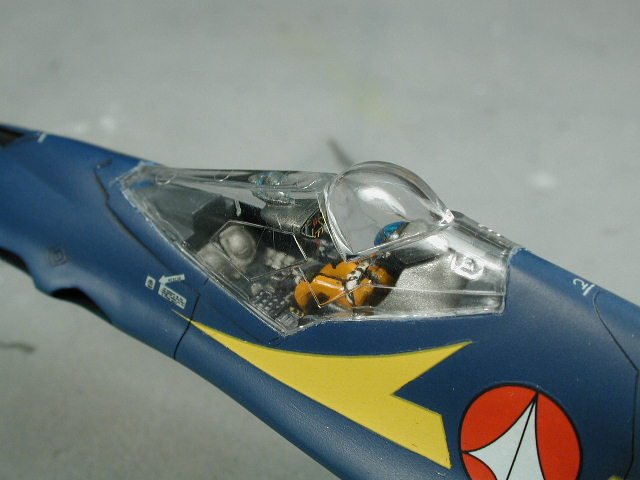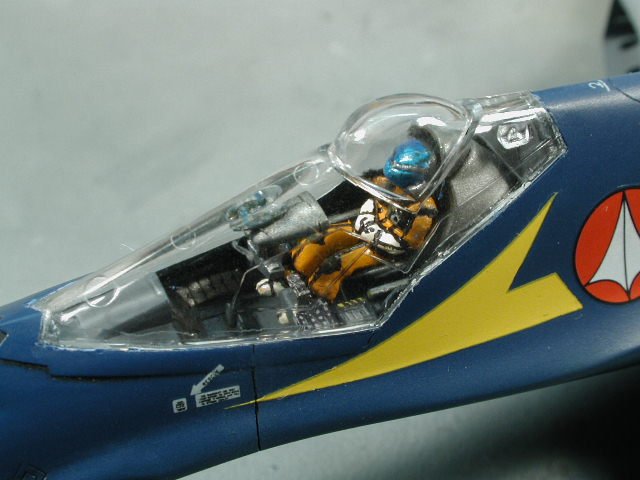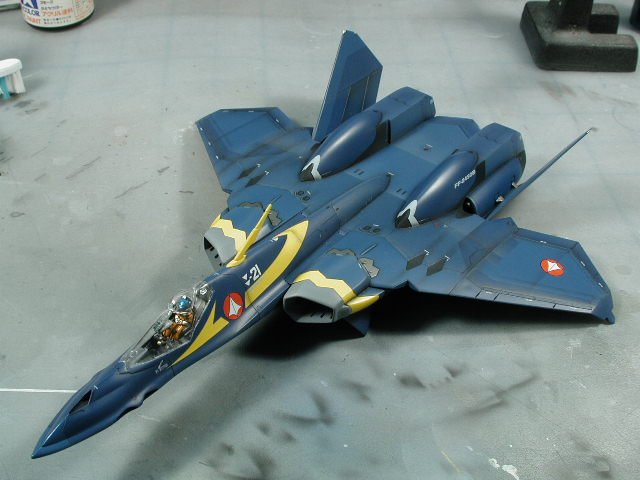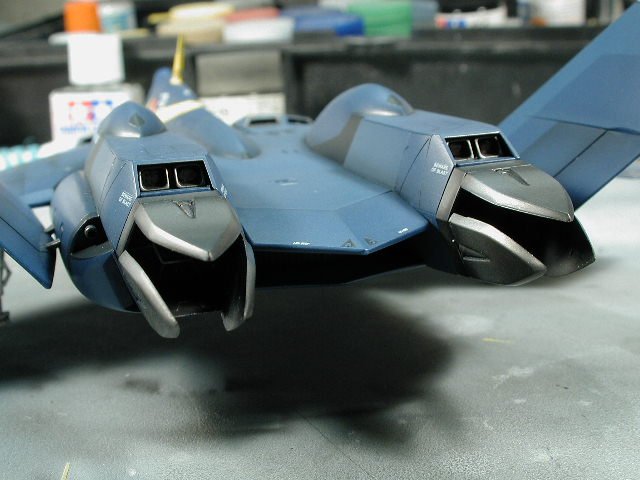-
Posts
4317 -
Joined
-
Last visited
Content Type
Profiles
Forums
Events
Gallery
Everything posted by wm cheng
-
Final shot for now - head on. Hopefully when I take some decent ones I'll post them to the Model section either tommorrow or the day after. Okay, my views on this model... at first its seems like it was going to be the easiest of all the models by Hasegawa thus far - so many big pieces - I had the whole thing put together in 4 hours! Now the details are a bit of a mixed bag - sure, some of the parts didn't line up as well as we would come to expect from a Hasegawa kit and thus there were some bit of filling and sanding - though I wouldn't say anymore than any other Macross offering. The decals were a bit off - especially the yellow intake graphics, but they were put on nevertheless, the black and grey engine bit also were a bit tricky, mostly because of the compound curves - they too didn't fit exactly over the scribed details. I think someone different had a go at this kit from Hasegawa - a few connection points were too small (ie; the vectoring fins). But as you can see, overall its a good kit - probably a little more involved to make the blue scheme interesting, but I would put it in the middle to hard end of the pact. I would say the YF-19 as the easiest, followed by the VF-1, then super or strike, working your way up to this YF-21 and the VE-1 Elint. Thanks for tuning in... all criticisms welcome thanks.
-
-
-
-
Maybe I should of drilled out those rear thrusters now - they look a bit shallow - I might paint them black inside. I like how the rear gear shock strut glints
-
-
-
The sheen changes as you walk around the plane - very cool B) You can see the red nav lights done in Tamiya clear over the silver base on the rudder/stabilzers (red up front, silver in back).
-
Another view You can see the weathering with the flat clear coat here a bit better. I hit all the leading surfaces with the flat, I then masked off some of the panel lines with post it notes, and sprayed those with flat as well. I squared corners of the engines and the blue portion f the intakes got its edges sprayed with flat as well - its subtle, but I think it pops out the blue shading a bit more - kind of gives a bit of life to it.
-
Finally the piece de resistance!! I'm finished!!! Here's a brief walkaround for now, until I get some sun tommorrow to really properly take photos of this baby - I'm kind of proud of it myself - it turned out better than I hoped for. I always had troubles with this blue paint scheme (very toy like) but this rendering makes me smile
-
-
The guns I painted in Alclad Steel, with a flat black post-shading and oil wash to pick out the rear exhaust. Man, with this dark colour, every speck of dust shows up - its almost statically attracted to the model
-
-
-
-
Here's a shot into the intake with the black shading in place to look like a shadow - its too bad that these intakes are so short and capped flat - maybe it would be a good idea to chop it off at the end and stick a spare Valkyrie turbine blades in behind (we've all got some of those lying around after our super/strike valks eh?)
-
The side ones I am especially happy about, since you can see the red at the right end - its very cool The photographs don't do it justice.
-
Again, those forward clear sensor lenses fit perfectly. Infact, you should not even try to pre-fit them (otherwise you won't be able to get them out again). The tinting worked out well, especially since I painted the interior well black first. I put in a dab of white glue, so that it will dry clear, then fitted each piece narrow end in first and pressed. You can see the red sensor painted inside.
-
Again another fear solved - the wingtip lights. What I did was heed the other warnings that they did not fit properly and undercut (undersized) the openings. When I got to this stage, I then carefully filed back the opening constantly checking with the clear piece until I got a satisfactory fit. Yes, if you just blindly follow the scribed lines, the clear pieces probably would not fit as nicely. In fact the top and bottom scribed lines don't meet up exactly - tisk, tisk...Hasegawa. I glued the pieces in with white glue - its a canopy glue that dries clear. I will paint them with Tamiya clear red and blue later.
-
Well, one of my biggest fears have been allieviated - the canopy decal fits perfectly! Oh, well, too bad the blue and grey doesn't exactly match the rest of my pant job - its not too bad here, since there are quite a few shades of blue to work with. I guess the advantage to masking is that you would get the exact shade of blue and greys that you have painted with. I didn't mind too much. One tip is that I trimed all my decals right up to the image - as close as you can without cutting into the graphics - it always helps to not see the carrier film - especially when its on a clear surface. Oh well... Bowman is pretty much hidden - however, you do see more in person holding the model than these photographs can show.
-
-
Here's the last shot we'll see into the cockpit before all my detailing gets hidden The messy seam is the liquid mask residue left over after I took the masking off - I'll clean it up
-
Well, backed by popular demand, here's probably the last shot you'll see with a clear canopy without the decal pattern.
-
I decided that I would space the vectoring fins out a little so it looks as though there is room to move. I filed away some of the paint from those little tabs so that it would have a better plastic to plastic bond. I think it looks better a bit out from the tailcone, than glued hard up against it - however, unfortunately, there is very little surface to left to glue against to create a tight bond - this may the most fragile part of the model. I would suggest maybe building these connection points up before you paint the area and maybe either pinning it like a resin model, or creating some kind of better joint between the pieces.
-
You see, most of that detail inside the afterburner goes to black after the thrust vectoring fins are in place, you can only see it if you shine a light straight up into it - but I know its there

